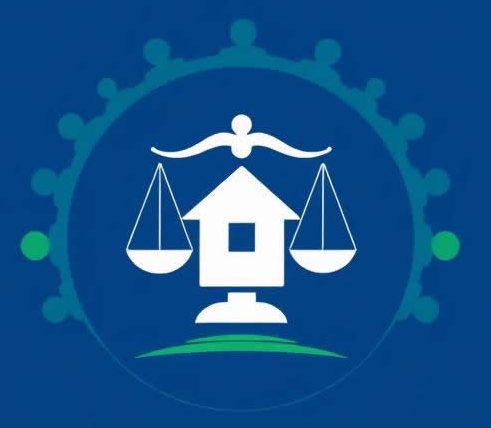Housing Choice Vouchers: Accelerating Access to Stable Housing
At The Office of Fair Housing and Tenant Rights, we are committed to ensuring fair and efficient access to safe, affordable housing. Working in compliance with the U.S. Department of Housing and Urban Development (HUD), we leverage our Compliance Acceleration Program (Fast-Trac Program) to streamline and expedite the Housing Choice Voucher (HCV) Program. Our goal is to reduce wait times and eliminate barriers, helping eligible families secure stable housing faster than ever before.

What Are Housing Choice Vouchers?
The Housing Choice Voucher Program is the federal government’s primary initiative to assist low-income families, the elderly, and individuals with disabilities in affording safe, sanitary, and private-market housing. Unlike traditional public housing, voucher recipients can select any home that meets HUD’s housing standards, including single-family homes, townhouses, and apartments.
Local Public Housing Agencies (PHAs) administer these vouchers using federal funds allocated by HUD. Families issued a voucher are responsible for finding suitable housing where landlords agree to participate in the program. The PHA directly pays a portion of the rent to the landlord, and the tenant covers the remaining balance. In some cases, vouchers may also be used to purchase a modest home if authorized by the PHA.
Expediting the Process with Our Compliance Acceleration Program
Due to overwhelming demand and long waiting lists, many eligible families face years of delays before receiving housing assistance. Through our Fast-Trac Program, we work collaboratively with PHAs, landlords, and community organizations to accelerate the approval process and help families secure housing in a fraction of the usual wait time. Our strategies include:
- Direct PHA Collaboration – We work closely with PHAs nationwide to expedite application reviews and prioritize high-need cases.
- Landlord Engagement & Incentives – Encouraging landlords to participate in the HCV program, increasing housing availability.
- Streamlined Documentation Assistance – Helping families prepare and submit required paperwork efficiently.
- Priority Placement for Eligible Families – Assisting those in urgent need, such as individuals facing homelessness or displacement.
Who Is Eligible for Housing Choice Vouchers?
Eligibility is determined by the PHA based on total annual gross income and family size. Vouchers are available to U.S. citizens and eligible non-citizens, with priority given to applicants whose income does not exceed 30% of the area’s median income.
Applicants must provide:
- Proof of income, assets, and household composition
- Verification through employers, financial institutions, and government agencies
Upon approval, families are placed on a waiting list unless immediate assistance is available. Once their turn arrives, they receive a housing voucher and can begin their search for a suitable rental unit.
How to Apply for a Housing Voucher
To apply for a Housing Choice Voucher, contact your local PHA or the nearest HUD office. PHAs may have different waiting list policies based on regional demand.
Local Preferences & Waiting Lists
Given the limited availability of vouchers, PHAs may prioritize applicants based on specific criteria, such as:
- Families experiencing homelessness or displacement
- Households spending over 50% of income on rent
- Individuals living in substandard housing conditions
Applicants meeting these criteria move ahead on the list, reducing their wait time through our Fast-Trac Program.
How Housing Choice Vouchers Work
Housing vouchers allow participants to select the best housing for their needs. Key program elements include:
- Unit Eligibility & Inspections – All rental units must meet HUD’s health and safety standards.
- Rent Payment Structure – Tenants pay approximately 30% of their adjusted monthly income towards rent, while PHAs cover the remaining portion.
- Fair Market Rent Standards – PHAs establish payment standards based on local market conditions.
If a tenant chooses a unit with rent exceeding HUD’s payment standard, they must cover the difference. However, families may not be required to pay more than 40% of their adjusted income in rent.
The Role of Tenants, Landlords, PHAs, and HUD
Each participant in the HCV program has defined responsibilities:
- Tenants: Maintain the property, follow lease terms, and notify PHAs of income or household changes.
- Landlords: Provide safe, well-maintained housing that meets HUD standards and comply with program requirements.
- Public Housing Agencies (PHAs): Administer the voucher program, approve rental units, and distribute housing assistance payments.
- HUD: Oversees funding and monitors PHAs for compliance with federal regulations.
Portability: Moving with Your Voucher
The HCV program allows families to move without losing assistance. If a tenant relocates to a new jurisdiction, their voucher remains valid as long as the new housing meets HUD’s program standards and the local PHA accepts the transfer.
Enhancing Landlord Participation
To increase housing availability, we support landlords by:
- Offering financial incentives for participation
- Providing tenant screening assistance
- Ensuring timely and reliable rent payments
Additional Information & Resources
For further assistance, contact your local PHA or HUD office. You may also qualify for other subsidized housing programs, which can be explored through HUD’s Office of Housing.
Governing Regulations
The Housing Choice Voucher Program is regulated under 24 CFR Part 982.
Interested in Becoming a Landlord?
If you’re a property owner looking to participate in the voucher program, visit HCV Landlord Resources for more information.
